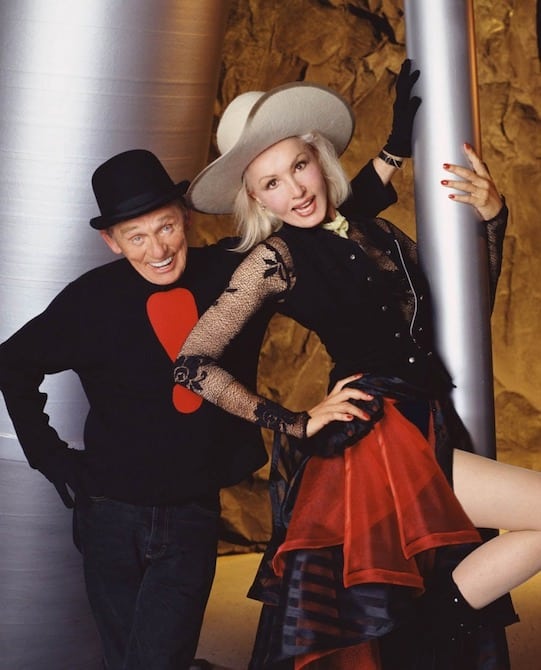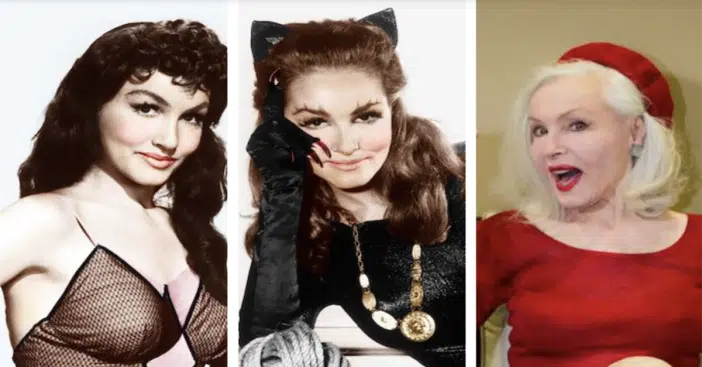
Although Julie Newmar recently turned 90, even more impressive is the fact that she’s an actress who’s enjoyed a 70-year career in films, television, and on the stage. Yet through it all, of course, there is one role that instantly comes to mind whenever her name is mentioned: Catwoman, the character she portrayed to purrfection 13 times in the classic Adam West Batman television series of the 1960s, but there is so much more to her.
Julie was born August 16, 1933, in Los Angeles to Don and Helene Newmeyer. He was the head of the physical education department at Los Angeles City College and had been a professional football player in the 1920s. She was a Swedish-French fashion designer who was also a Ziegfeld Follies girl. Encouraged by both and ambitious from an early age, Julie, by the time she was 15, was performing as a prima ballerina with the Los Angeles Opera.
The earliest media report we could find on her was in the September 3, 1954 edition of The York Dispatch, which described Julie as a woman of incredible diversity. “Julie Newmar, who is five feet, nine inches tall, can do anything from ballet to zither playing,” reported Whitney Bolton. “She sings, she dances, she paints, she plays tennis, she knows about atomic fission and she wants a job on Broadway. In Seven Brides for Seven Brothers, she is one of the brides. She also has been a ballerina in Paris, a ballerina and gypsy dancer in Seville, a ballerina in light opera in Los Angeles, and a girl who doesn’t think it the hardest thing in the world to swim from Wilmington, California to Catalina Island, although she hasn’t done it. And all this at 24 years.”
The writer wasn’t finished there, adding, “She sings as well as many musical comedy leading women, does reasonable portraits in oil, tempera and pastel, can do you a mechanical drawing of an atomic reactor, prepare the drawings for architectural blueprints and, for all anyone knows, can rivet a girder or plan a subway.”
RELATED: The Cast of ‘Batman’ The Series Then and Now — 2023
Looking for Her Big Break
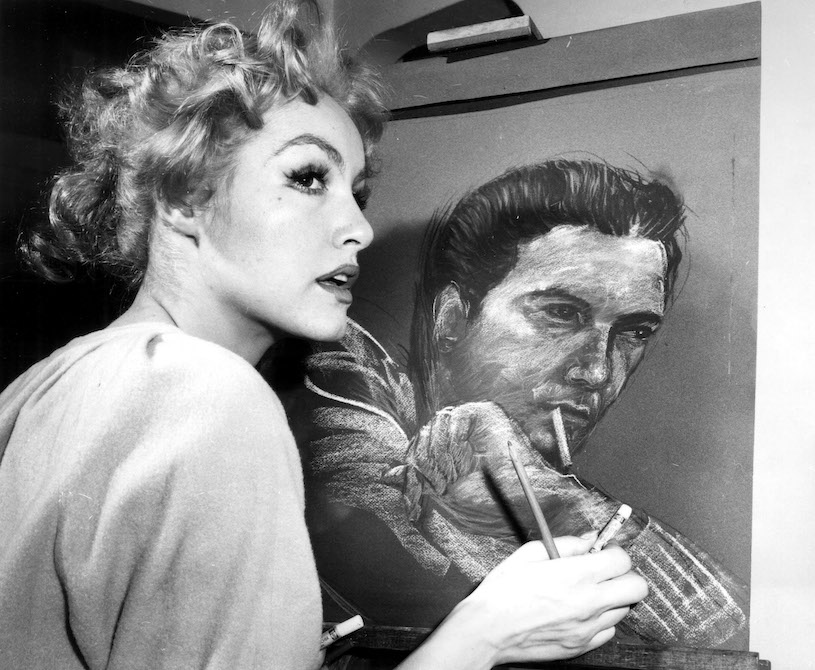
A year later, on December 22, the New York Daily News offered up an article titled “Broadway’s Switch to Women,” which included profiles of a number of female stage performers, among them Julie, who, at the time, was in the show Silk Stalkings and, according to the piece, at 21 was still looking for her “big break.” In that particular piece, they noted that at the age of 3, Julie had begun appearing in several movies prior to her being discovered by Broadway and then “undiscovered.”
“Originally,” she explained, “I had a pretty good part in Silk Stalkings, but so much was cut out that I sometimes wonder whether I’m really in it.”
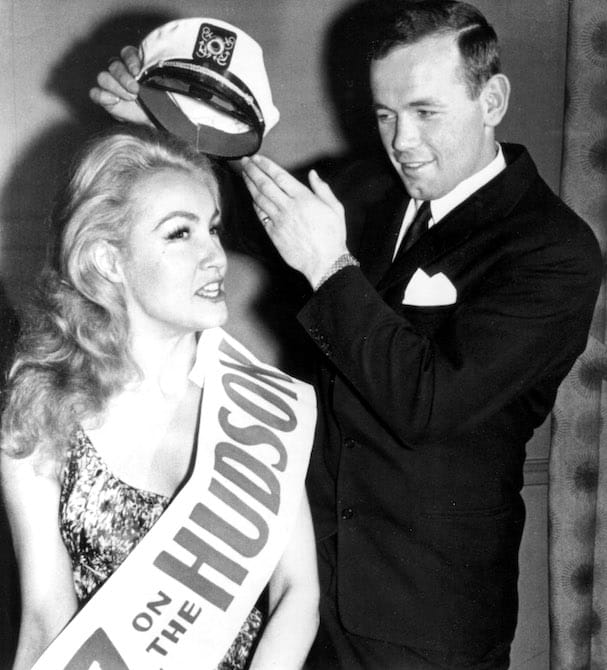
Her Hollywood career really began when, at age 19, she worked as a choreographer and dancer for Universal Studios, which led to bit parts — often requiring dancing and for her to be in various stages of undress — in films like Slaves of Babylon (1953) and Serpent of the Nile (1954). Her first role to gain attention was in 1954’s Seven Brides for Seven Brothers (in which she was credited as Julie Newmeyer), but she established herself in an even bigger way on Broadway in the 1956 musical Li’l Abner (also featuring future Gilligan’s Island star Tina Louise), based on the comic strip by Al Capp, in which she played Stupefyin’ Jones. It’s a role she reprised in the film version three years later.
Texas’ Corsicana Daily Sun commented on November 26, 1956, of her stage performance, “There’s a new gal on Broadway today who is on stage only 90 seconds, but she’s 90 percent undressed, and that’s probably why she’s the talk of New York. Julie Newmar, the sexy show-stopper who oozes on stage in a 2-ounce costume, is not only physically stupefyin’ in the role of Stupefyin’ Jones, she’s mentally terrifyin.’ [She] stays up until 3AM answering fan mail that suggests, hints and outright claims that she has ‘the most beautiful figure in the world.'”
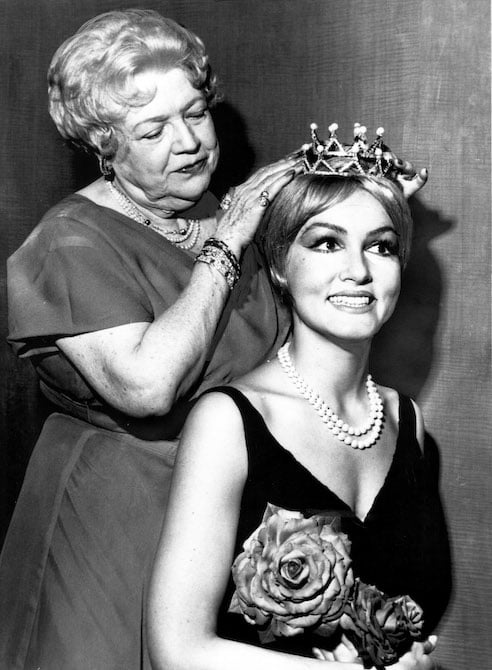
Of that fan mail she noted, “One guy said I’d look good in anything and the next day the mailman brought me an old gunny sack. [But] it’s really kind of sad. You can tell these people are lonely — they want to be loved.”
My Living Doll
In a 1958 interview with the News-Press, she expressed that she was having a great time with her career. “I’ve never worked a day in my life,” she enthused. “I don’t call what I’m doing work — this is expression. I like to express myself. I want success, but I’m not the scratching-for-success kind. It’s not a tapeworm eating inside me. I want to get to the top, but if I don’t, I don’t.”
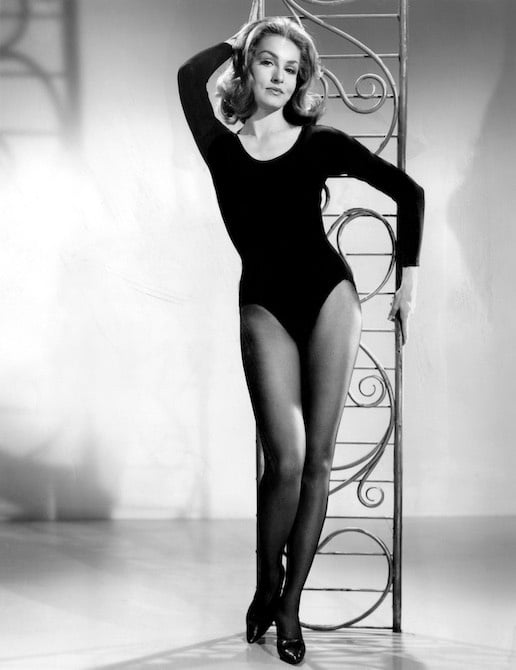
Well, she certainly seemed to be trying. Following Li’l Abner‘s end in 1958, she moved over to Broadway’s The Marriage-Go-Round, winning the Tony Award for Best Featured Actress in a Play as Katrin Sveg, a role she reprised in the 1961 movie version. That same year she starred in the single performance of the Sam Spewack play Once There Was a Russian as well as Damn Yankees (revived in 1965). Next up was 1963’s Stop the World — I Want to Get Off, 1964’s Irma La Douce, 1970’s Dames at Sea, and 1973’s Boom Boom Room, though she would be fired by the director who, in turn, found herself let go as well; and a 1998 production of Li’l Abner.
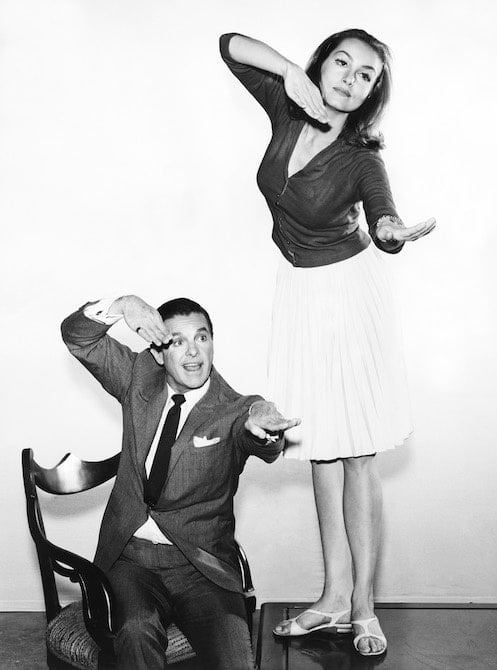
Television beckoned in the 1960s with Julie making guest appearances on series like The Defenders, Route 66, The Twilight Zone, The Danny Kaye Show, and The Greatest Show on Earth, before taking the starring role in 1964 to 1965’s My Living Doll, from Jack Chertok, producer of My Favorite Martian.
The series stars Bob Cummings as Dr. Bob McDonald, a psychiatrist who is given care of Rhoda Miller (Julie), a lifelike android by her creator, a scientist who did not want her to fall into the hands of the military. He’s initially reluctant but soon finds himself intrigued by the experiment of educating this sophisticated, but naive robot while keeping her identity a secret.
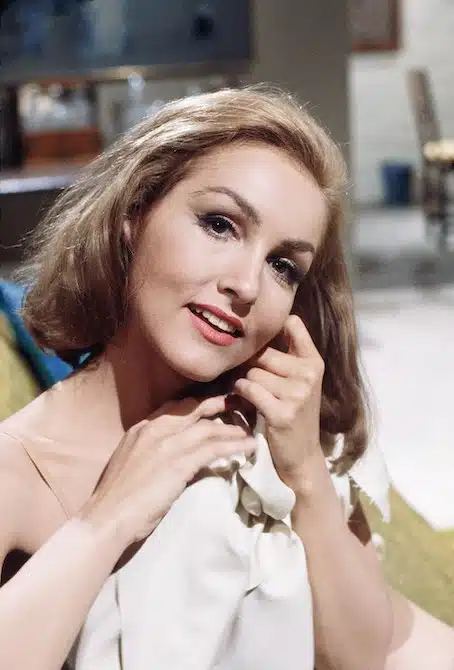
Speaking to The Pittsburgh Press at the time, Cummings said, “The secret of this show is in the believability of the robot, which they have built into the likeness of one of America’s most beautiful women. If we don’t believe in her, we won’t believe in anything. The robot is one of the most testing roles I’ve ever seen. Every action that anybody ever learned doesn’t work. The robot doesn’t initiate action of its own, it must be programmed.” Interestingly, though, over the course of its single season, it at least seems that Rhoda is actually developing human emotions.
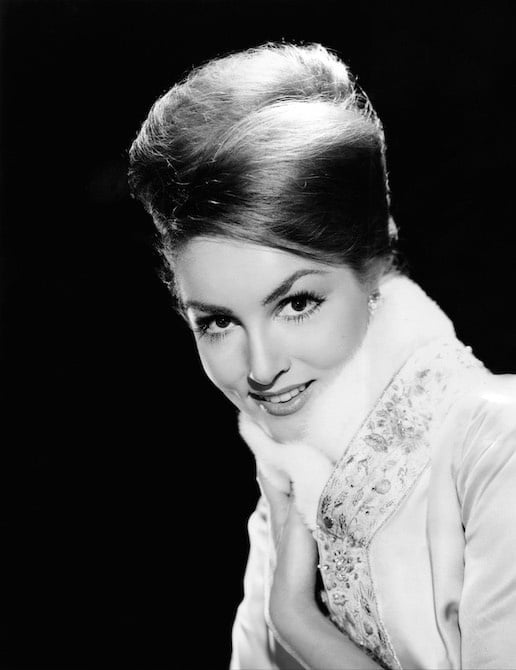
Julie told The Buffalo News in 1964, “I’m a robot, all right, but there’s nothing mechanical about me but my mind. To all appearances, I’m a flesh-and-blood individual. But being a robot, I can’t feel emotions such as love, hate, fear, or jealousy. This would be easy to do in a serious drama or horror film, but in a comedy, every word or gesture has to be just right or I fall flat on my face. The challenge is a tough one. I have to make viewers like me in spite of the fact that I’m a completely emotionless person, an artificially contrived person at that. It’s a cleverly written show, however, in that my presence has a definite purpose. Aside from serving as the inspiration for unusual comedy plots, I serve as a great foil for the true humans around me, revealing to them their weaknesses by my very invulnerability to them.”
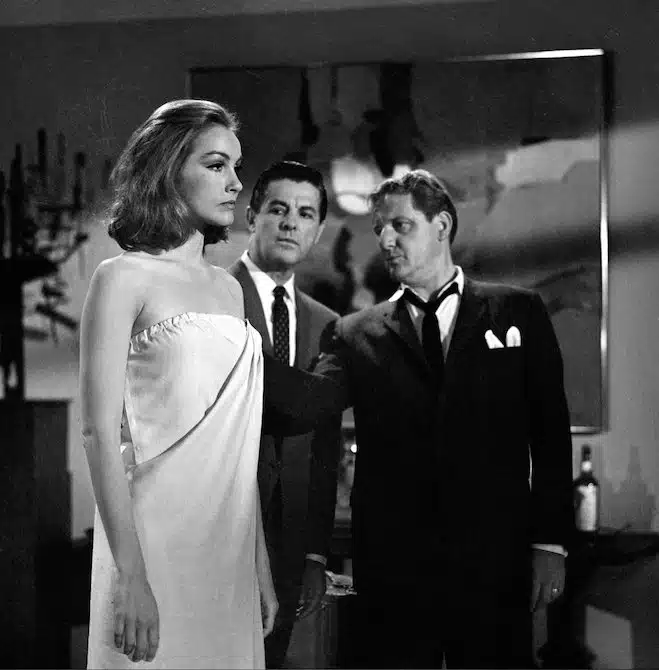
As to why it failed to connect, Julie mused to Starlog magazine, “CBS was looking for a series for Bob Cummings, but Doll wasn’t the proper vehicle, as it turned out. It needed a different type of actor. They originally wanted Efrem Zimbalist Jr. It was not a flip part — it needed a straight actor who could play opposite this bizarre creature so the comedy would come off. That quality was lost when they hired Bob. The show could have been wonderful. I think it would have run for many seasons had they hired Efrem, because he had the right qualities.”
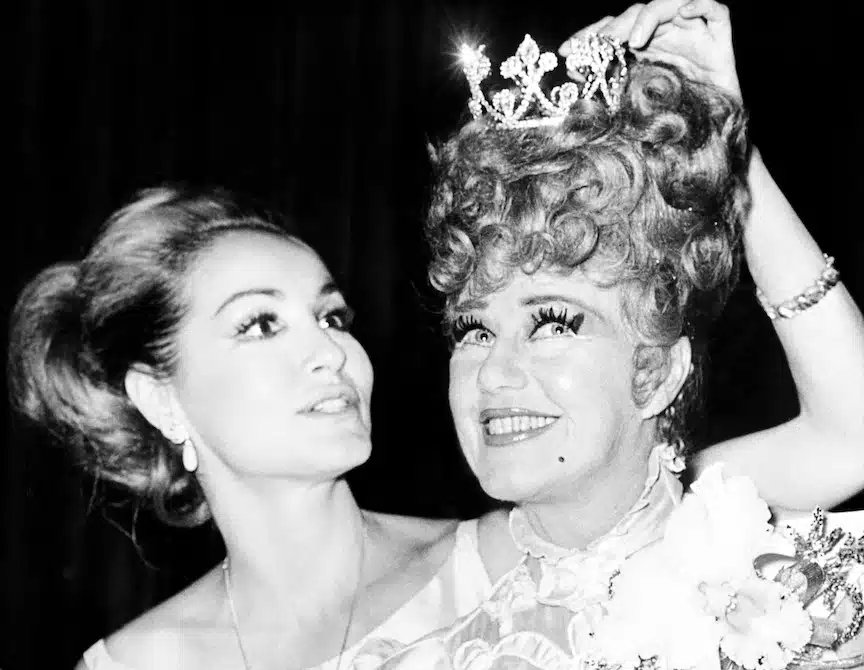
Elsewhere she said of the show, “The role was so challenging. This was my Shakespeare! It was a great show-off part and a gift to any aspiring actor. It was long hours — I would sleep on the set until the fire department threw me off the company lot. But anything that’s challenging is a feather in your cap.”
Becoming Catwoman
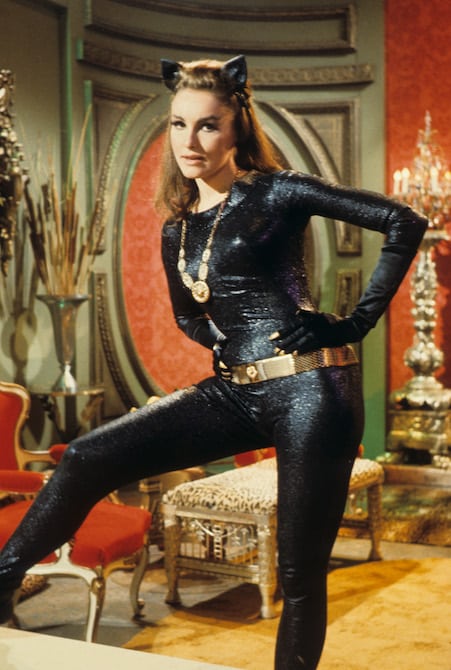
One of the biggest sensations of the 1960s was undoubtedly ABC’s Batman, which initially aired twice a week, starring Adam West in the title role, Burt Ward as sidekick Robin, and a wide variety of Hollywood stars filling the pre-Dark Knight’s rogues gallery. Among them were Cesar Romero as the Joker, Frank Gorshin as the Riddler, Burgess Meredith as the Penguin, and, of course, Julie as Catwoman, a role she would play a total of 13 times in the series.
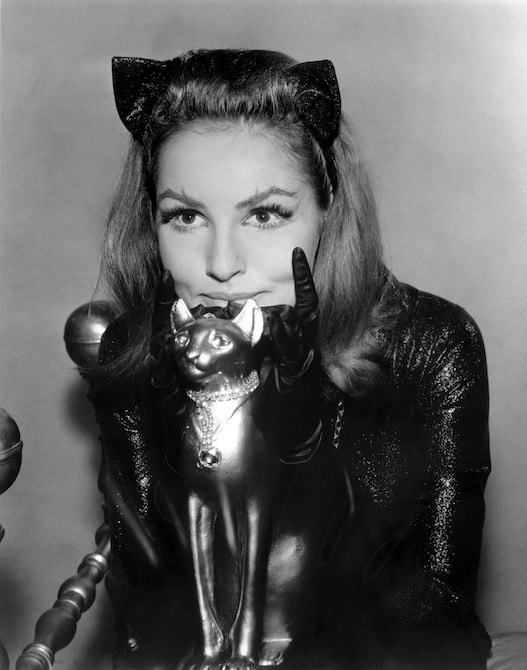
In an interview with Closer, Julie revealed that the show’s producers originally wanted Suzanne Pleshette (The Bob Newhart Show) in the role, but it didn’t work out for one particular reason: “She’s smart, sassy, but a mere 5-foot 4. I was available — with six inches to spare.”
Elaborating on how she was cast, she said, “I was in New York and my brother was visiting me from Harvard with friends. A phone call came and they asked about Catwoman on Batman. I didn’t know the show and didn’t read the comics. But when my brother heard about Batman — it was a huge hit at Harvard; they would stop their studies and watch the show — he literally pushed me out the door to do it.”

And she’s glad he did. While there was no way anyone involved with the series could have predicted the phenomenon it would become, she always had positive feelings towards it. “The people around you were supportive, and the script was wonderful. So was everything else. all the other actors were fabulous in their parts. It’s something that just comes together sometimes.”
After Batman, Julie continued making guest appearances on different television series, from the original Star Trek in 1967 to According to Jim in 2006, with several television movies in between. There were movies like Mackenna’s Gold and The Maltese Bippy (both 1969), Hysterical (1983), Ghosts Can’t Do It (1989), a cameo appearance in To Wong Foo, Thanks for Everything! Julie Newmar (1995), Return to the Batcave: The Misadventures of Adam and Burt and vocally reprising the role of Catwoman in the animated films Batman: Return of the Caped Crusaders (2016) and Batman vs. Two-Face (2017).
Life Outside of Hollywood
In the 1970s, Julie patented a pantyhose called “Nudemar,” described as having “cheeky derriere relief” and a brassiere under the same name, which was advertised as being “nearly invisible” and in the style of Marilyn Monroe. Flash forward to the 1980s, and Julie, never one to stand still, started investing in Los Angeles real estate, which worked out quite nicely for her.
Of the undergarments, she commented, “I had the best patent lawyer in the United States, a 37-year-old Catholic with five kids who presented the lingerie drawings quite ceremoniously, beads of sweat on his forehead.”
In her personal life, she had been engaged to author Louis L’Amour and had romances with comedian Mort Sahl and actor Ken Scott. She married lawyer J. Holt Smith in 1977, moving with him to Fort Worth, Texas until their divorce in 1984. She has a son, John Jewl Smith (born in 1981), who has a hearing impairment and Down syndrome. Julie herself suffers from an inherited neurological condition called Charcot-Marie-Tooth disease.
Speaking to The Evening Sun in 1974, Julie expressed dissatisfaction she was starting to feel with acting, particularly in the theater. “My business,” she said, “is a reflection of the society I’m in. My last three parts have been whores and homosexuals — if that mirrors society. I like acting, but it’s not me.”
Jump to 1982, and she discussed with the Daily Press her reasons for stepping away from the cameras and embracing the role of housewife. “I started doing a lot of domestic things. I loved it; I adored it. It takes a great deal of art to run a house and fill in that space with life and beauty. I learned to cook and I learned that a woman who devotes her life to running a home is vastly accomplished. But I had to go back to work. I had a family to support. I took my role as a housewife quite seriously, but a greater source must have had a different design for my life. One must flow with what one is given.
“I’m feeling like I have a new life on the horizon,” she added. “I think I’m entering the second part of my life and it’s going to be intricately greater than life number one. I feel fully in charge.”
She may have believed that was a new stage, but anyone who has looked at her life and career will realize that being in charge is something Julie Newmar has embraced for most of her 90 years.
Julie Newmar Filmography Highlights
Serpent of the Nile (1953)
“Early on,” Julie told the New York Daily News, “they were always trying to get me into parts where I was taking things off. In Serpent of the Nile, I played a statue brought to life. They painted me in gold all over and I posed like that for 14 hours.”
Seven Brides for Seven Brothers (1954)
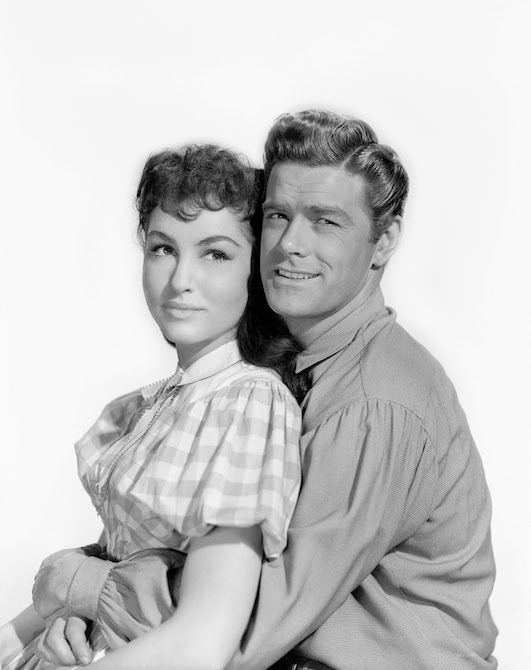
The Phil Silvers Show (1955 TV Guest Star)
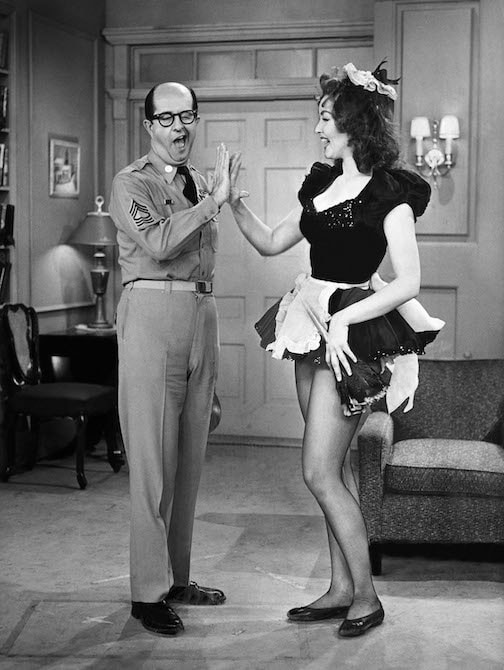
Li’l Abner (1956 Broadway Production)

The Rookie (1959)
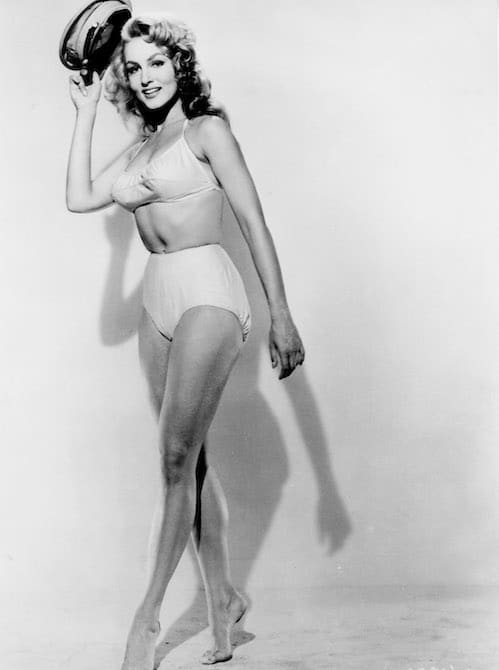
Li’l Abner (1959 Movie Adaptation)
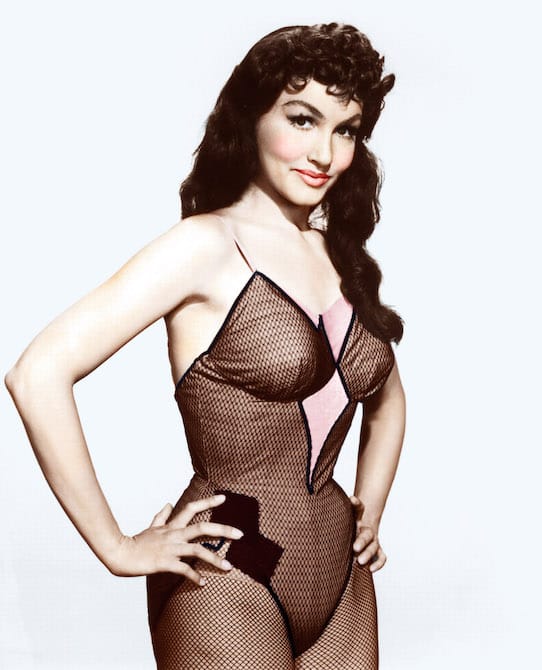
The Marriage-Go-Round (1961)
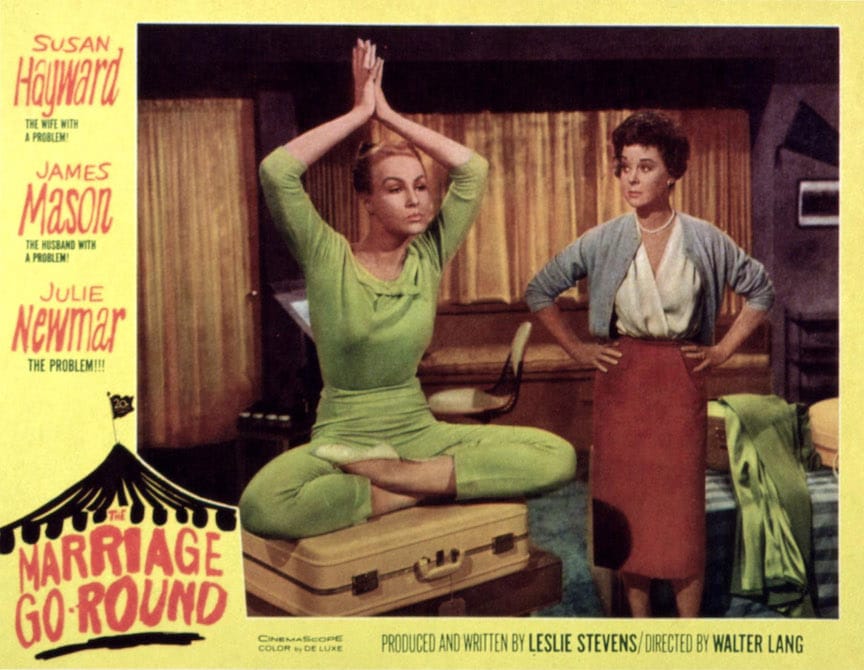
The Defenders (1961 TV Guest Star, “Gideon’s Follies”)

Damn Yankees (1961 Stage Production)
Route 66 (1962 Guest Star in Two Episodes)
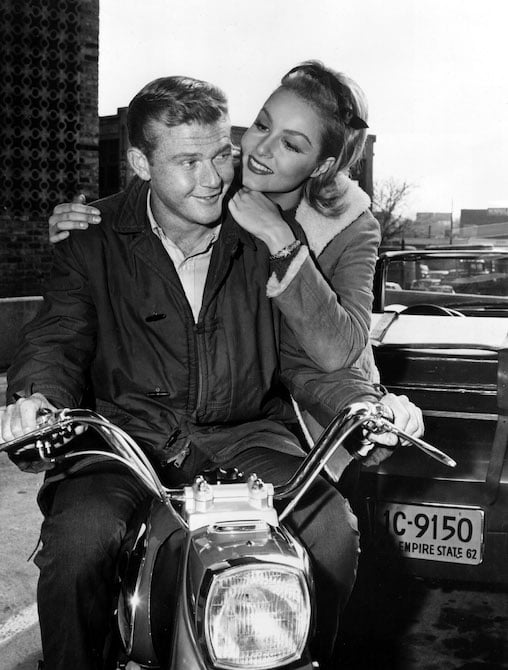
For Love or Money (1963)
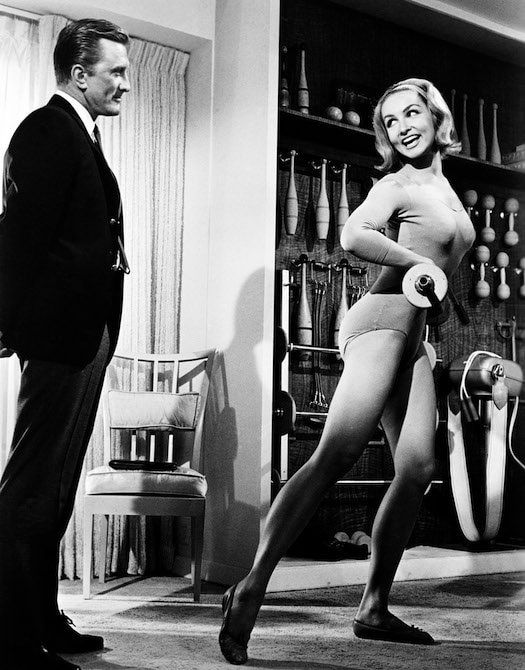
Stop the World — I Want to Get Off (1963 Stage Production)
The Twilight Zone (1963 Guest Star, “Of Late I Think of Cliffordville”)
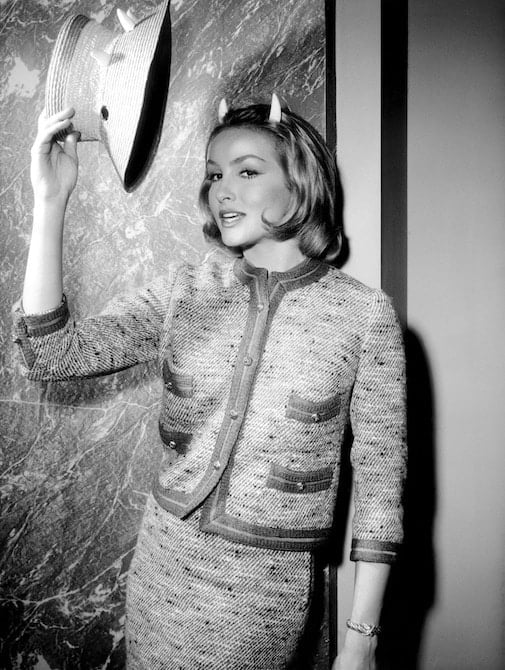
The Danny Kaye Show (1963 TV Guest Star)
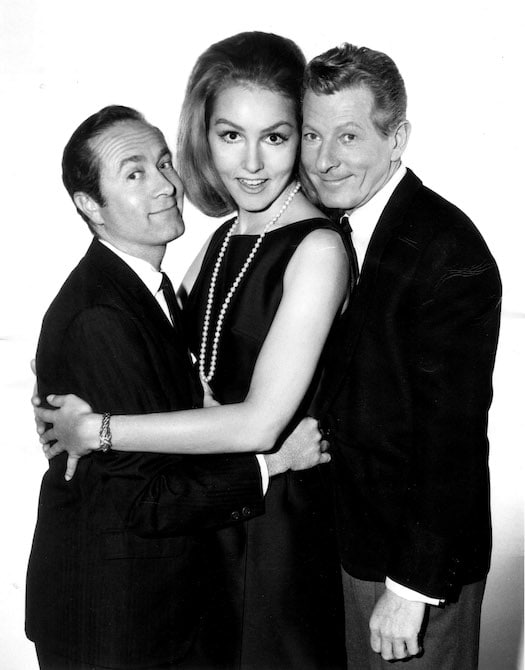
The Greatest Show on Earth (1964 TV Guest Star, “Of Blood, Sawdust and a Bucket of Tears”)
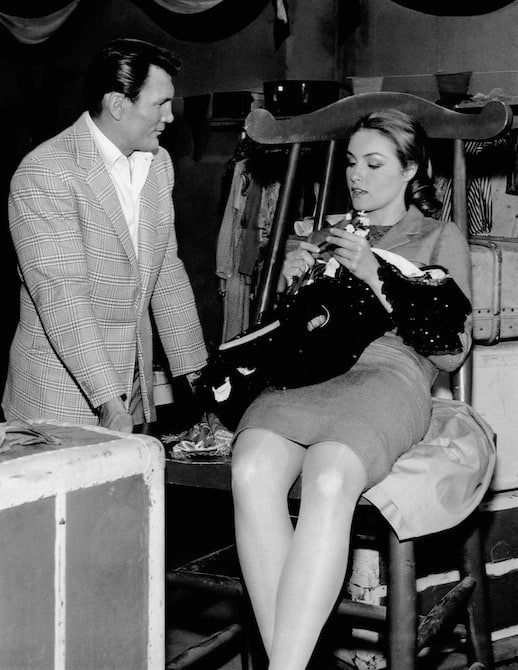
My Living Doll (1964 to 1965 TV Series)
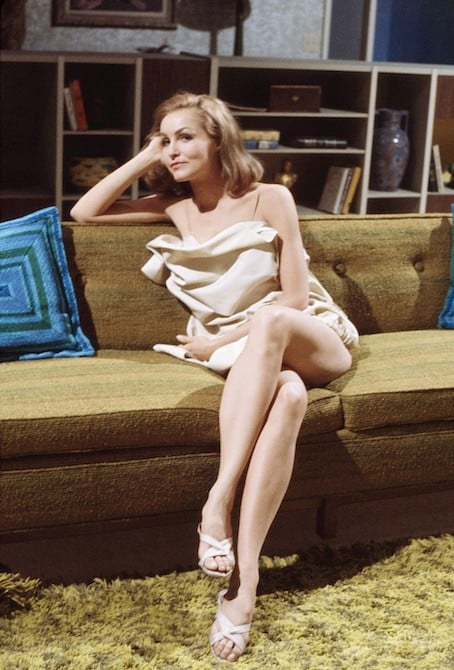
“I played a character named Rhoda the Robot,” Julie explained of this series at the time. “The show was in black and white and it was just before Batman and Star Trek. It was a tour de force for me, and probably the most important work that I’ve done. That was a wonderful show and probably my best work.”
F Troop (1966 TV Guest Star, “Yellow Bird”)
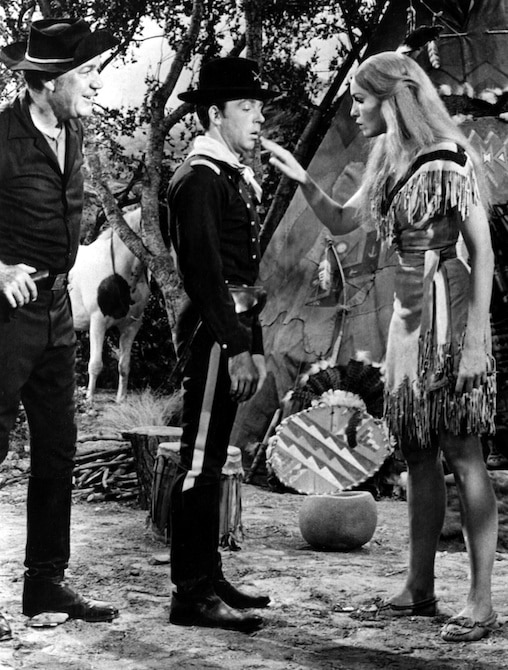
The Beverly Hillbillies (1966 TV Guest Star, “The Beautiful Maid”)

Batman (1966 to 1967, 13 Episodes Playing Catwoman)
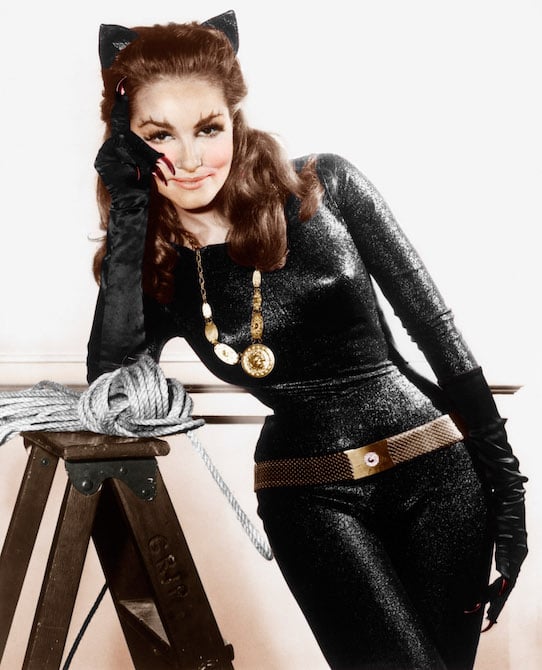
Star Trek (1967 TV Guest Star, “Friday’s Child”)
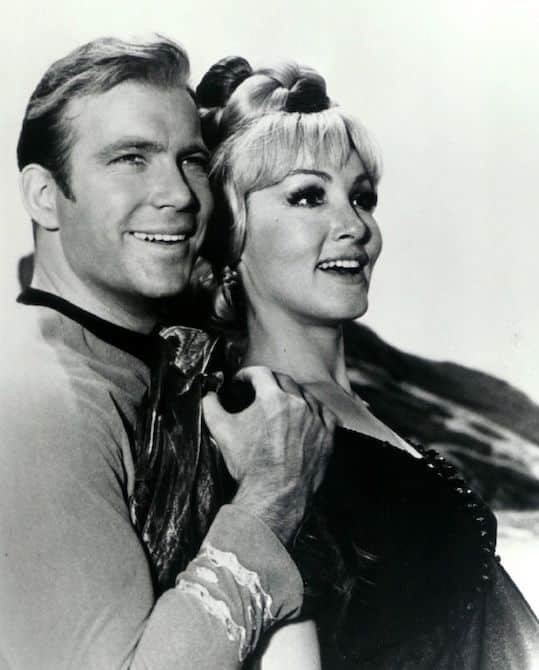
Julie reflected to startrek.com on the continuing impact of this episode of television she shot so many decades ago. “What I remember about it,” she said, “was being nine months pregnant and running around the hills of Vasquez Rocks, which is now overrun with housing developments. I just thought it was another show, but it will go on long beyond either of us. Beyond any of us.”
The Monkees (1967 TV Guest Star, “Monkees Get Out More Dirt”)
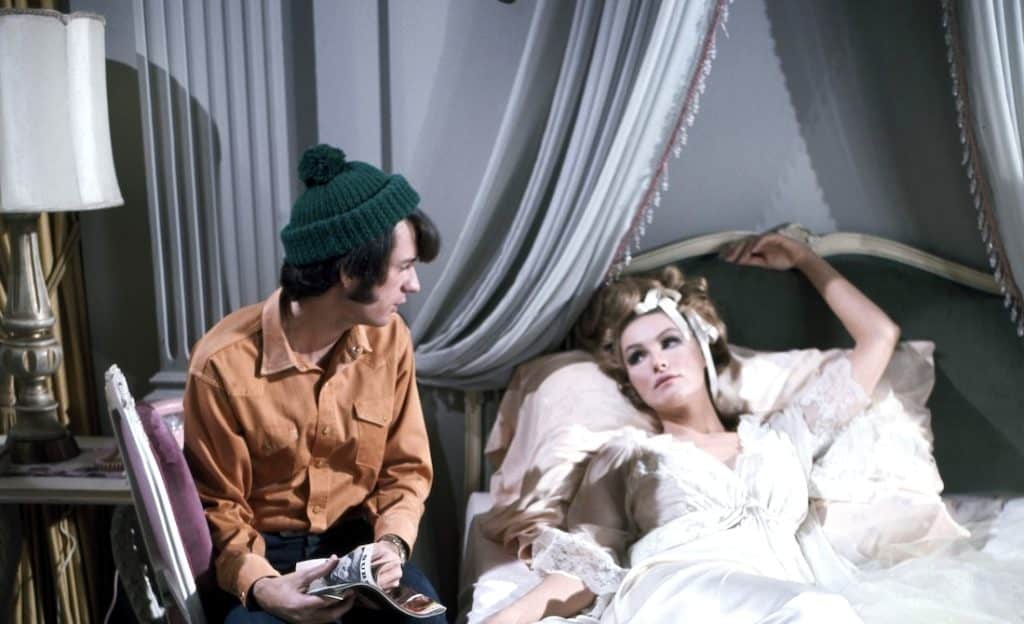
It Takes a Thief (1969 TV Guest Star, “The Funeral Is on Mundy”)
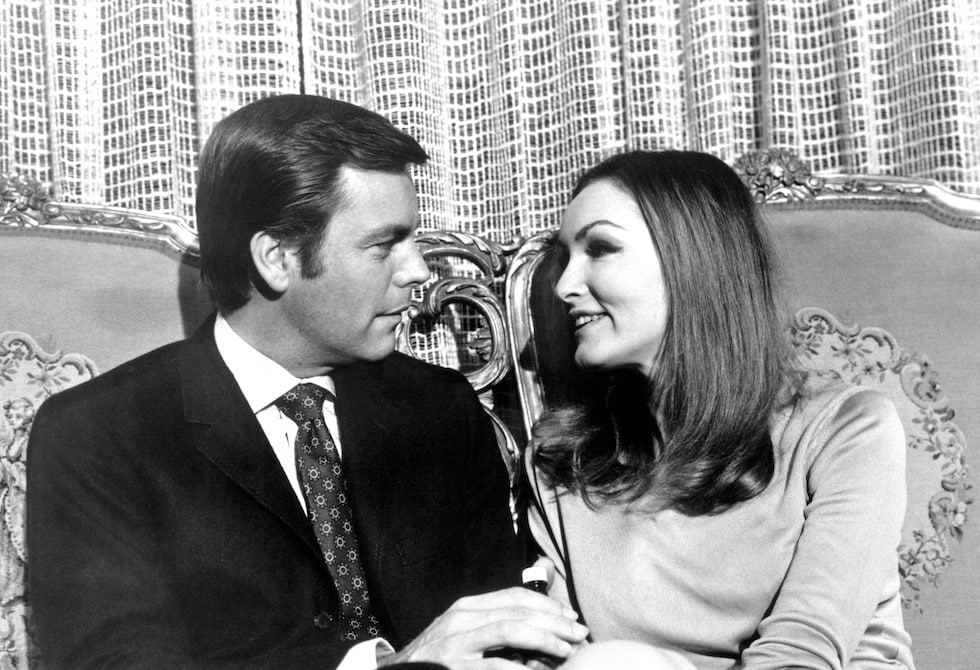
Mackenna’s Gold (1969)
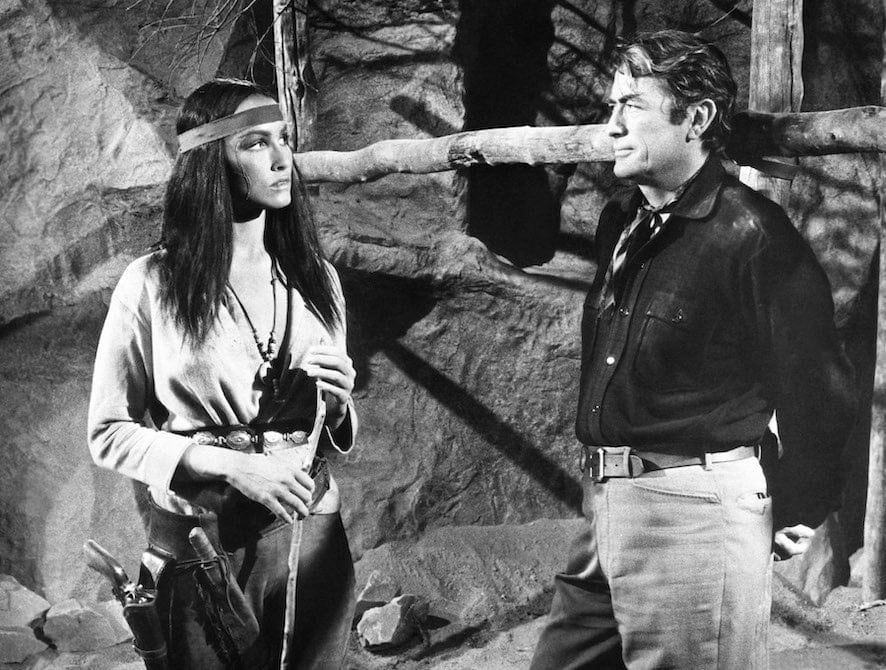
The Maltese Bippy (1969)
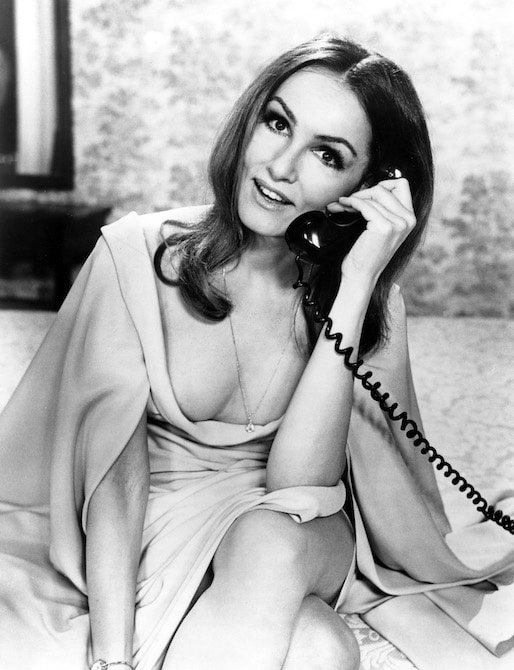
Love American Style (1970 to 1974 TV Guest Star in Four Episodes)
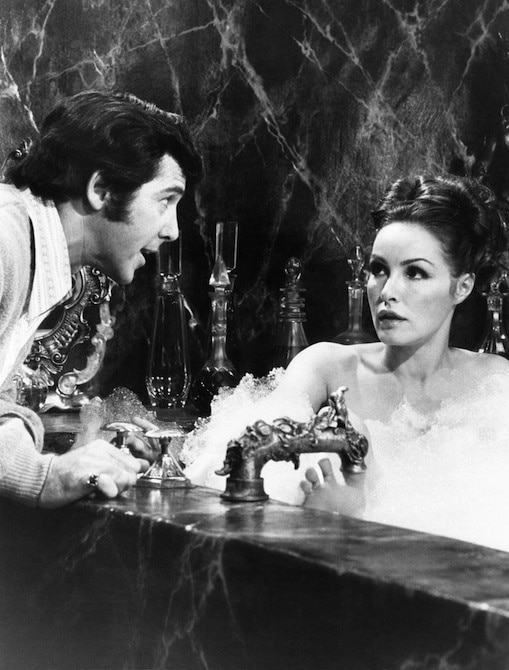
Seduction of a Nerd (1970)
Bewitched (1971 TV Guest Star, “The Eight Year Itch Witch”)
Columbo (1973 TV Guest Star, “Double Shock”)
Jason of Star Command (1978 TV Guest Star, 2 Episodes)
Buck Rogers in the 25th Century (1980 TV Guest Star)
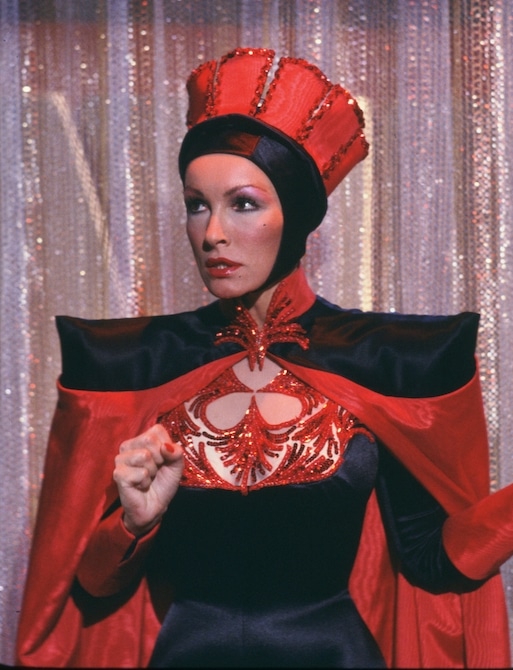
Hart to Hart (1983 TV Guest Star, “A Change of Heart”)
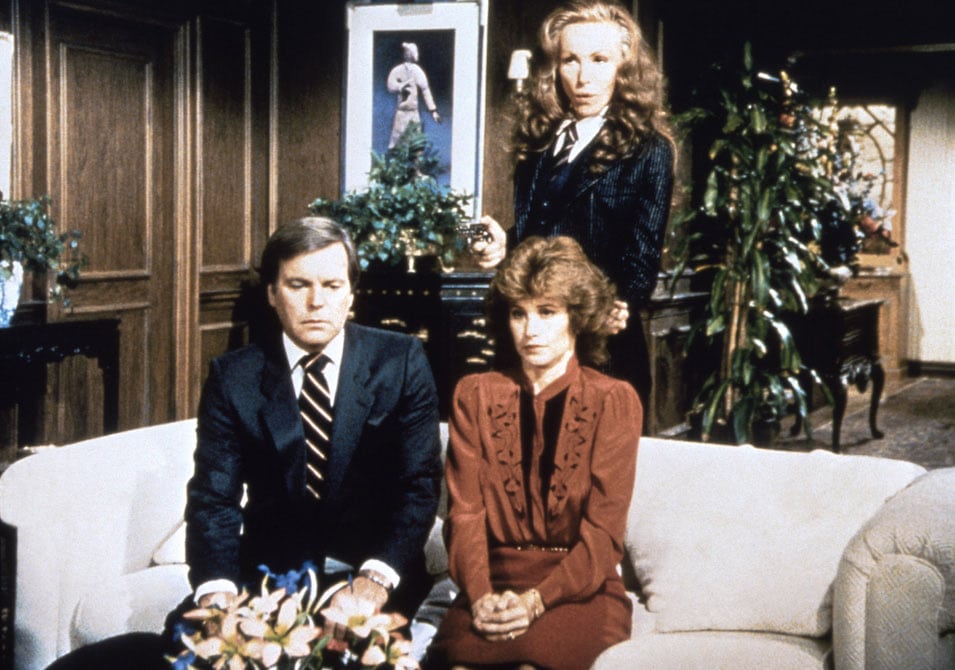
Hysterical (1983)
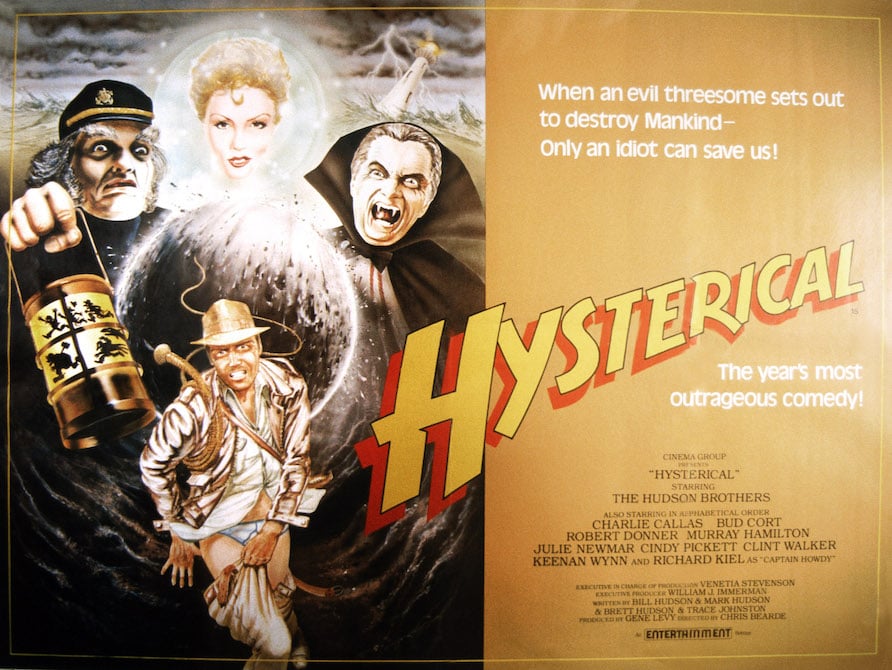
Half Nelson (1985 TV Guest Star, “The Deadly Vase”)
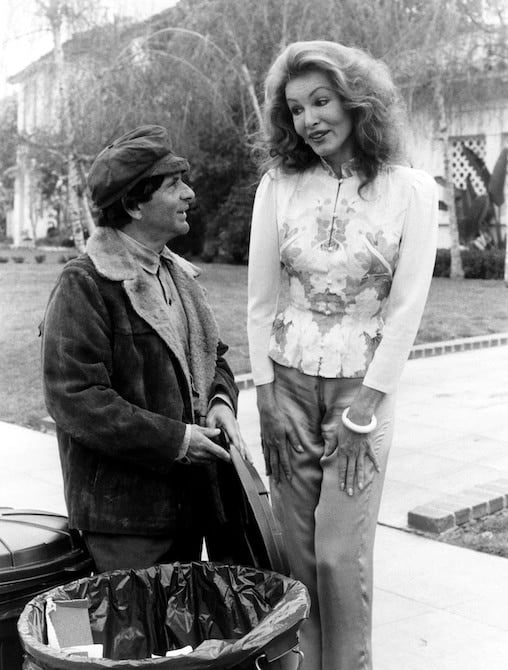
To Wong Foo, Thanks for Everything! Julie Newmar (1995)
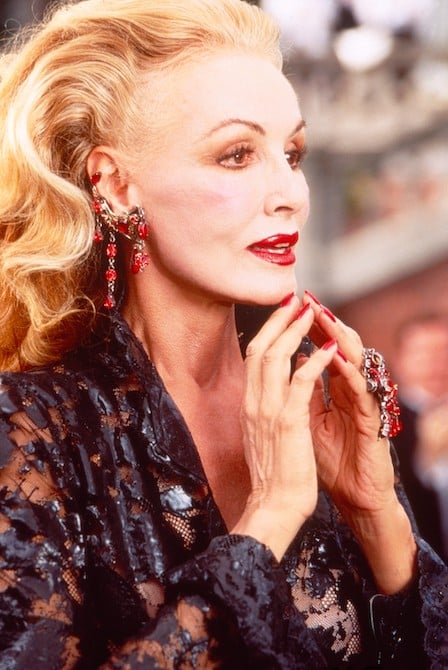
Return to the Batcave: The Misadventures of Adam and Burt (2003)
